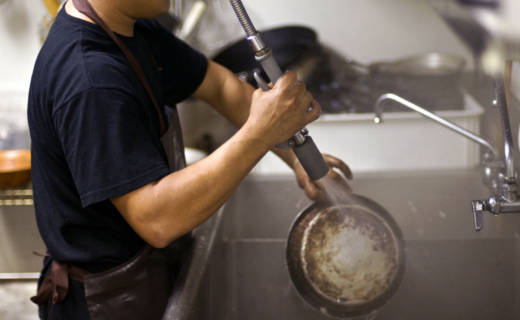They come from places like Vietnam, China, Mexico and Guatemala, lured by promises of better-paying jobs and legal immigration. Instead, they're smuggled into the U.S., forced to work around the clock as bussers, wait staff and cooks, and housed in cramped living quarters. For this, they must pay exorbitant fees that become an insurmountable debt, even as their pay is often withheld, stolen or unfairly docked.
In restaurants, bars and food trucks across America, many workers are entrapped in a form of modern slavery. That's according to a new report by Polaris, an organization that fights human trafficking and helps survivors.
In the report the group offers a detailed portrait of human trafficking as it occurs in the U.S., breaking it down into 25 distinct business models, from nail salons to hotel work and domestic service.
"Because human trafficking is so diverse ... you can't fight it all at once and there are no single, silver bullet solutions. You have to ... fight it type by type," Bradley Myles, CEO of Polaris, told reporters on a press call. "We see this report as a major breakthrough in the field."
He called the report the largest data set on human trafficking in the U.S. ever compiled and publicly analyzed. The Polaris team analyzed 32,208 reports of human trafficking, and 10,085 reports of labor exploitation processed through its hotlines for victims between 2007 and 2016. The goal: to identify profiles of traffickers and their victims — and the methods they use to recruit and control them — across industries, in order to better thwart them.
